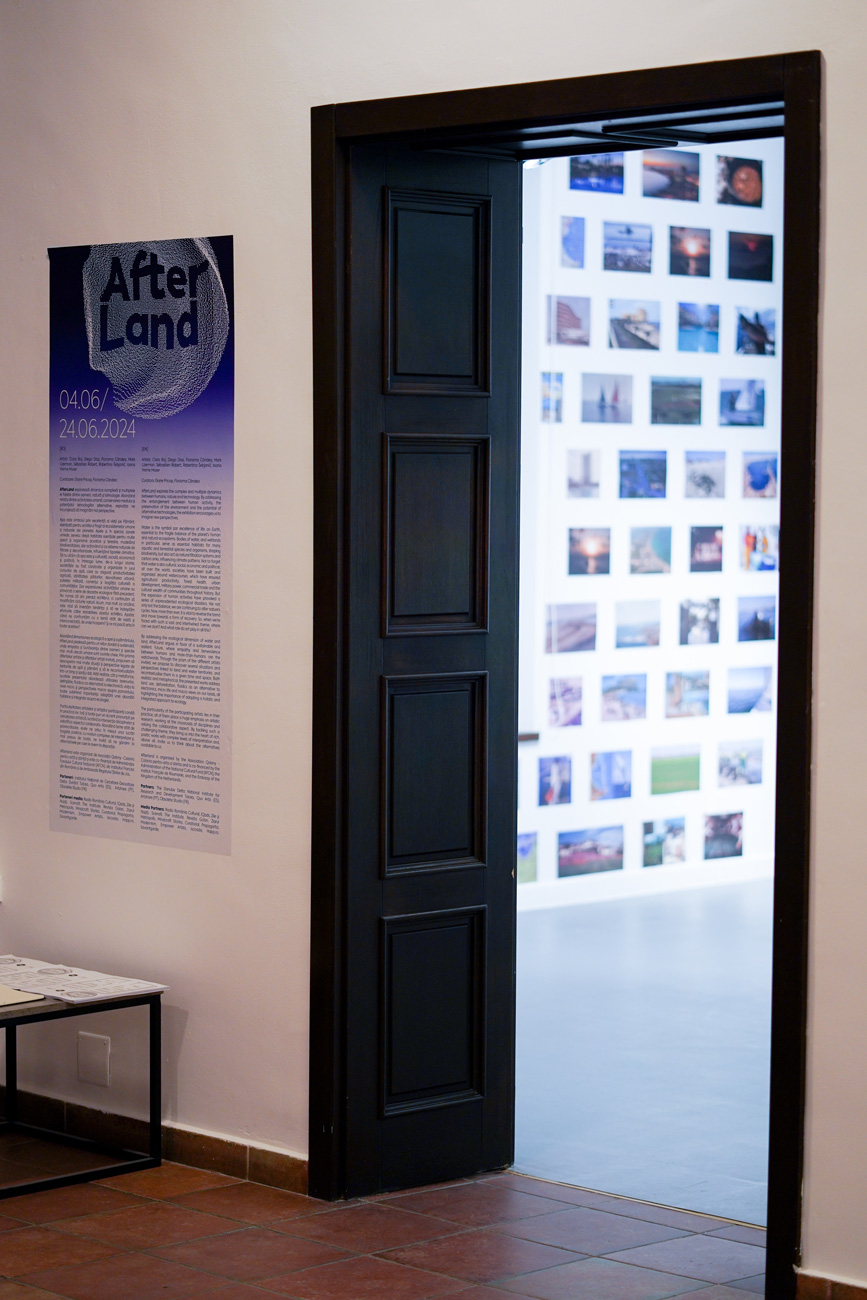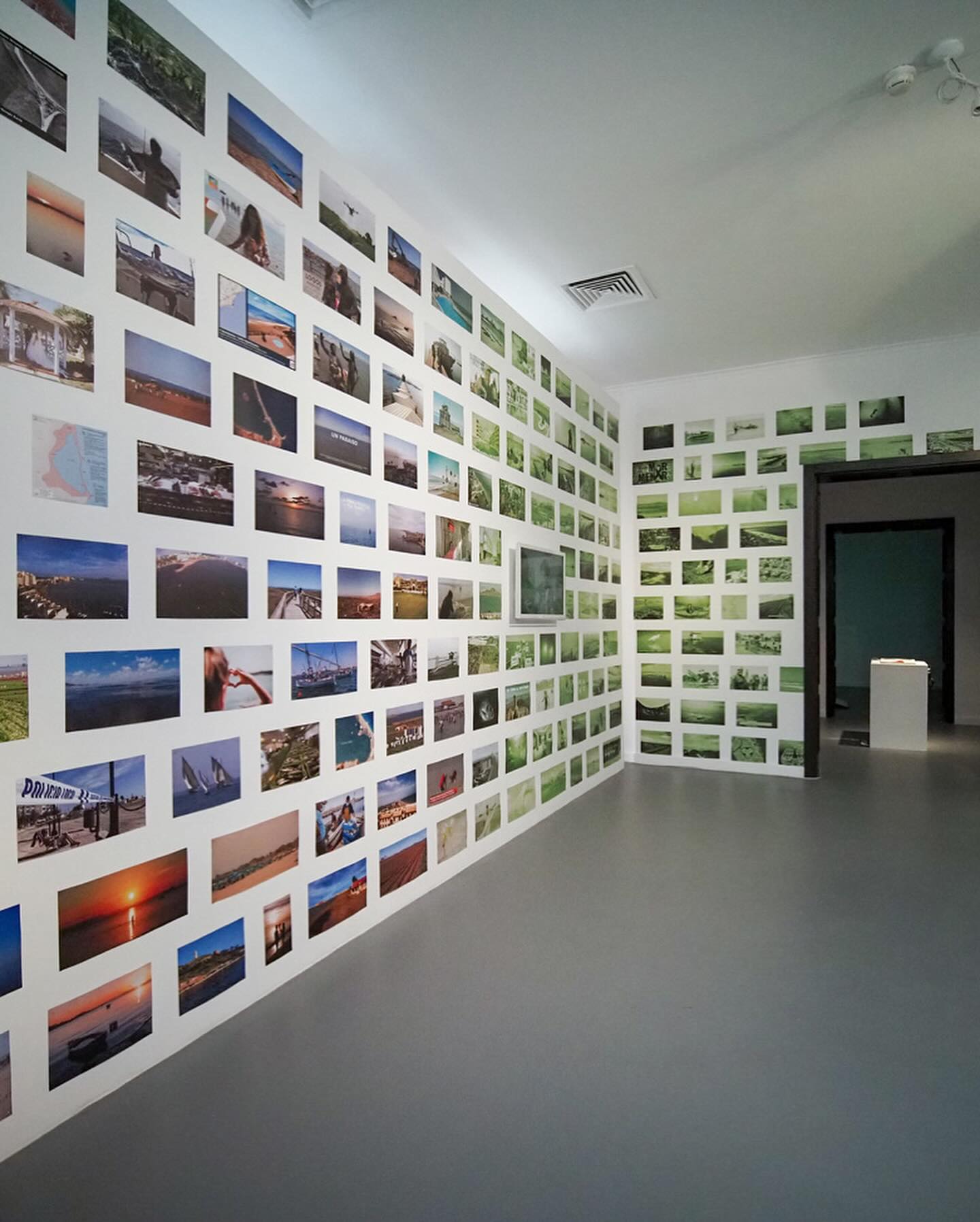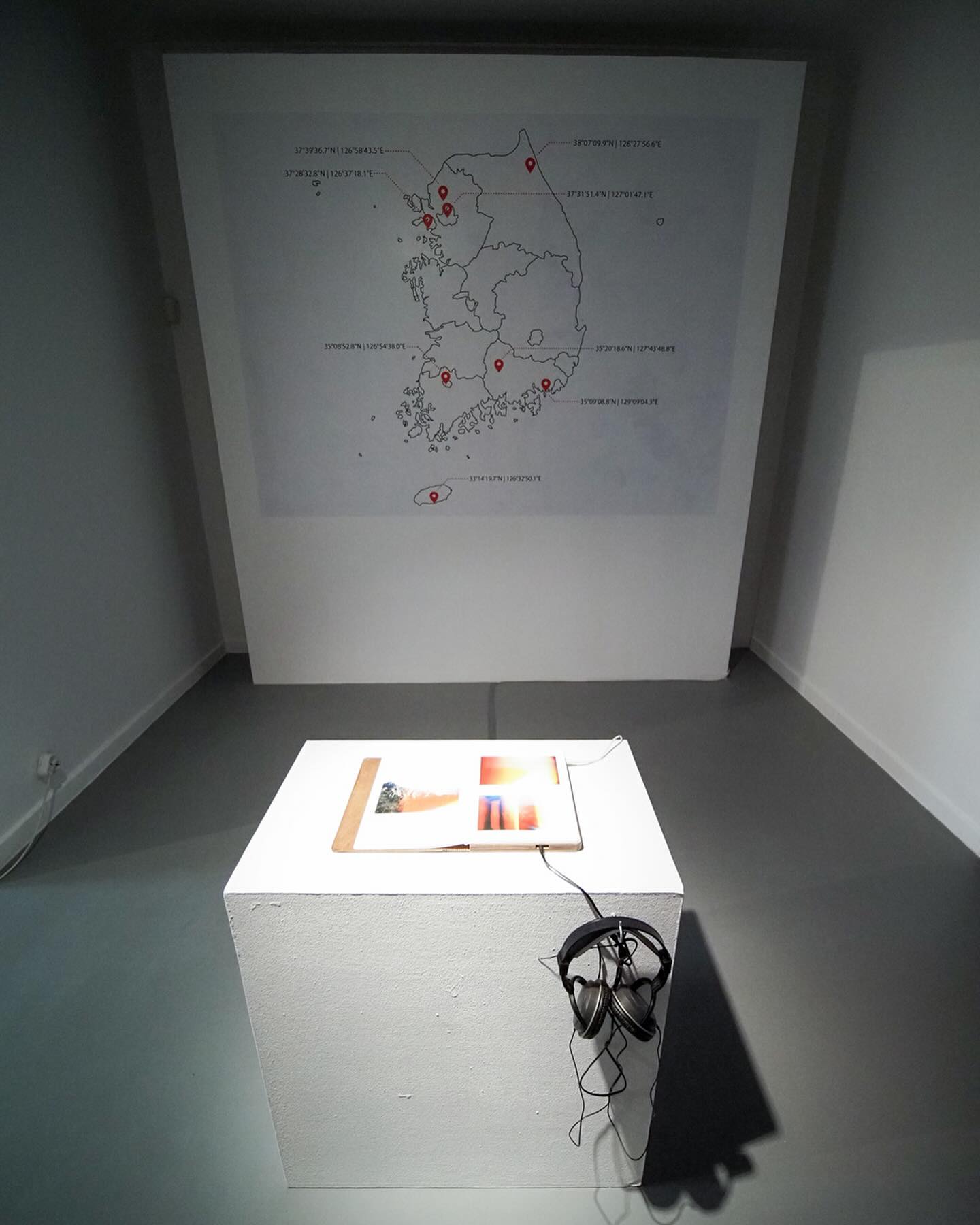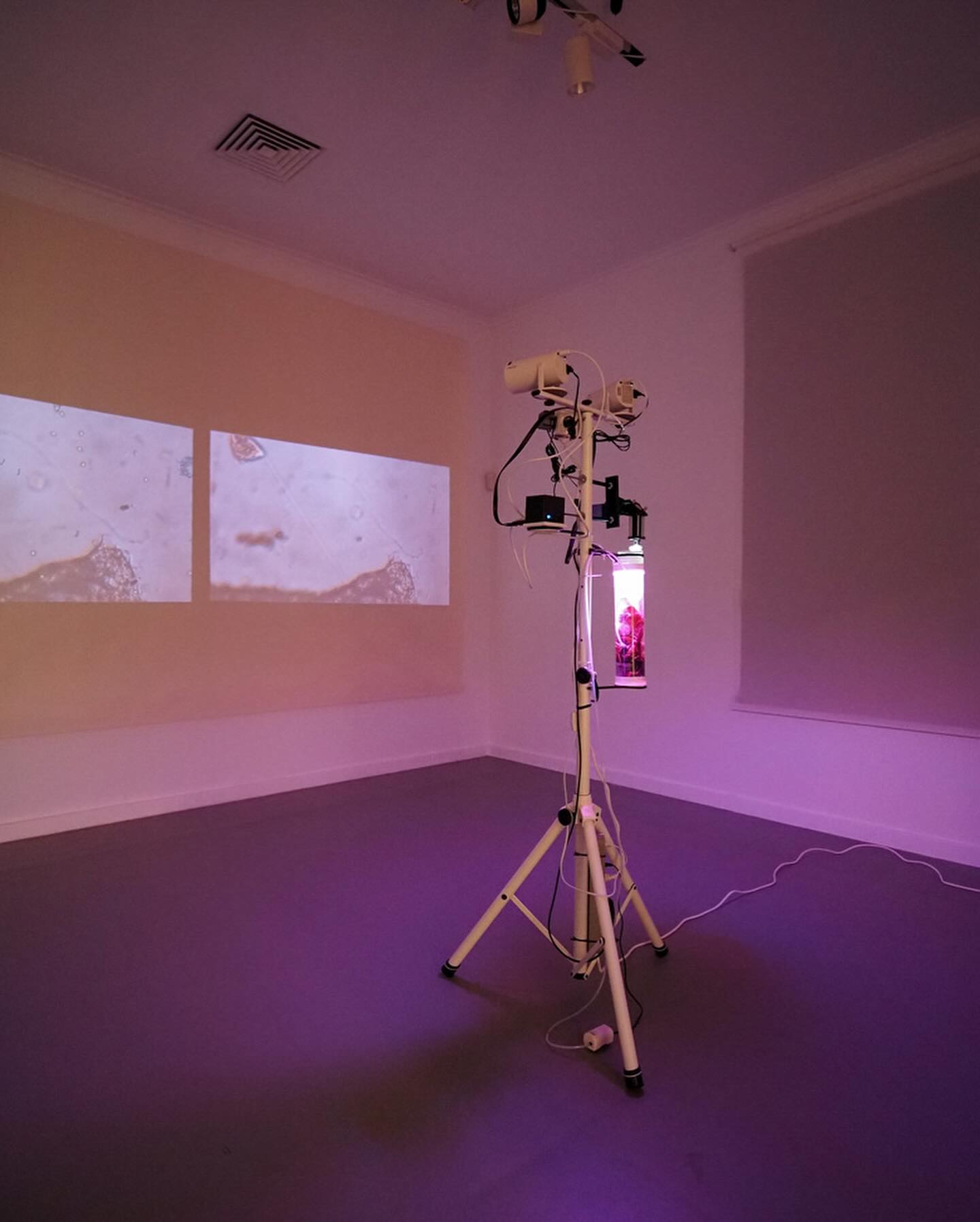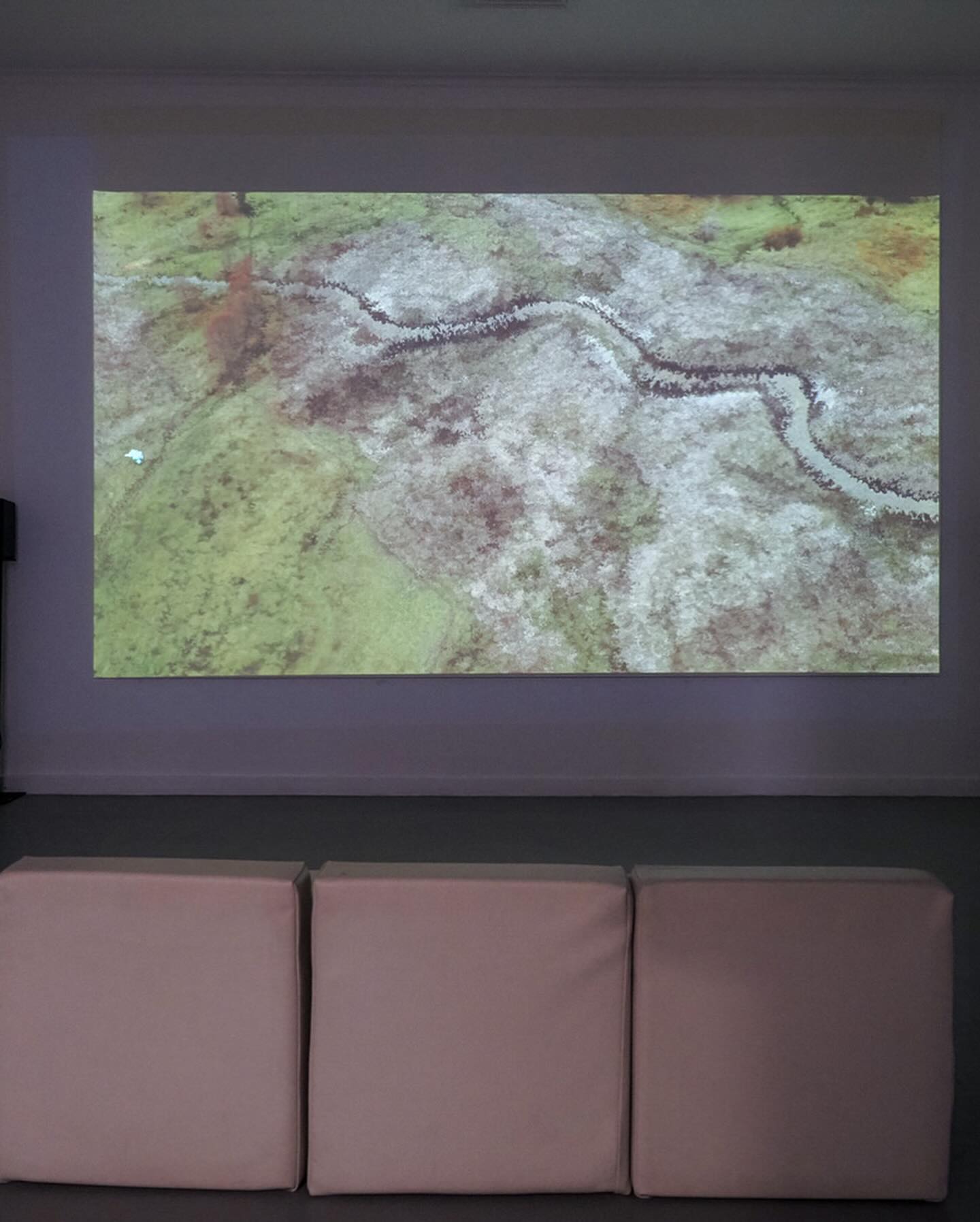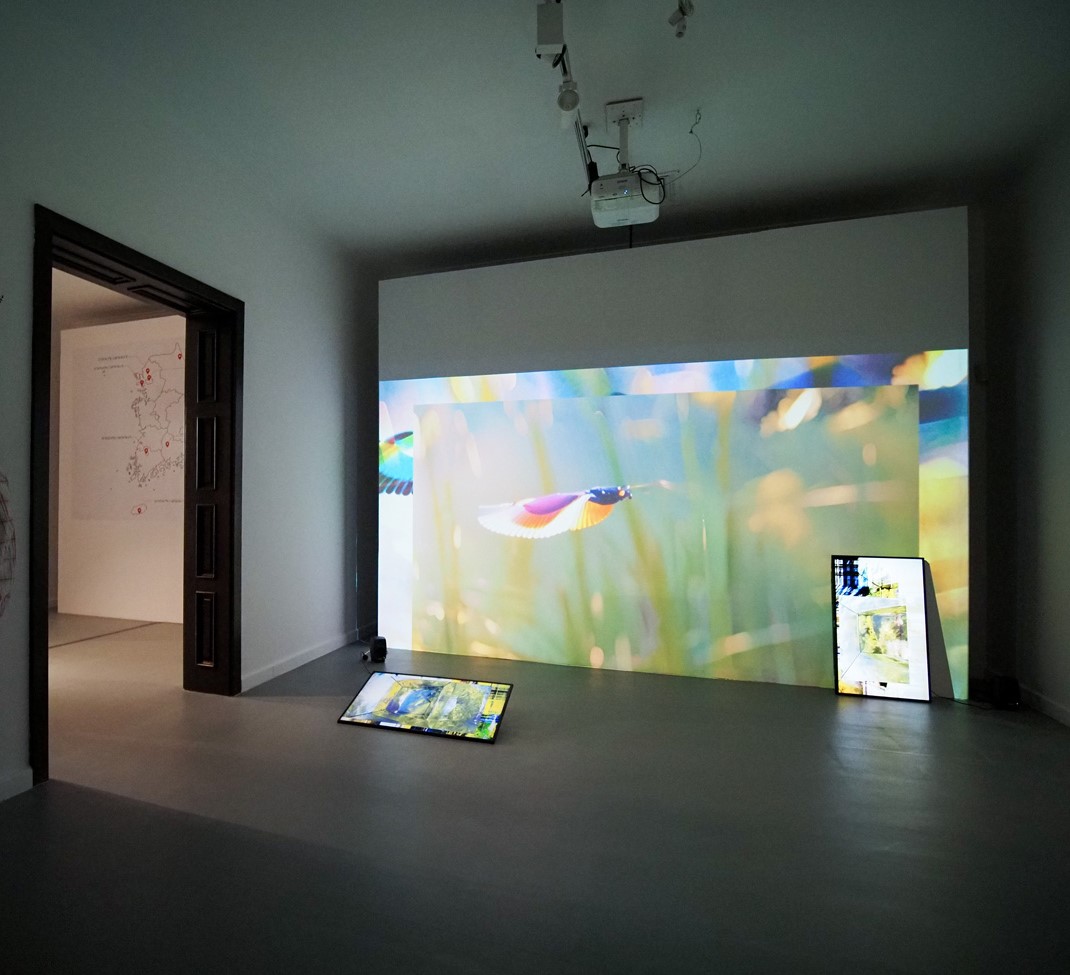The collective exhibition AfterLand, hosted by Rezidența9, explores new artistic landscapes and concepts. This exhibition features the works of talented artists: Ioana Vreme Moser, Sébastien Robert, Mark IJzerman, Floriama Candea, Robertina Sebjanic, Clara Boj and Diego Diaz. The central theme of the exhibition is water and land ecology, exploring the entanglement between art, the environment, and the human impact on it.
AfterLand explores the complex and multiple dynamics between humans, nature and technology. By addressing the entanglement between human activity, the preservation of the environment and the potential of alternative technologies, the exhibition encourages us to imagine new perspectives.
Water is the symbol par excellence of life on Earth, essential to the fragile balance of the planet’s human and natural ecosystems. Bodies of water, and wetlands in particular, serve as essential habitats for many aquatic and terrestrial species and organisms, shaping biodiversity, but also act as natural filtration systems and carbon sinks, influencing climate patterns. Not to forget that water is also cultural, social, economic and political ; all over the world, societies have been built and organized around watercourses, which have ensured agricultural productivity, forest health, urban development, military power, commercial trade and the cultural wealth of communities throughout history.
But the expansion of human activities have provoked a series of unprecedented ecological disasters. We not only lost the balance, we are continuing to alter nature’s cycles. Now, more than ever, it is vital to reverse the trend and move towards a form of recovery. So, when we’re faced with such a vast and intertwined theme, where can we start? And what role do art play in all this?
By addressing the ecological dimension of water and land, AfterLand argues in favor of a sustainable and resilient future, where empathy and benevolence between humans and more-than-humans are the watchwords. Through the prism of the different artists invited, we propose to discover several situations and perspectives linked to land and water territories, and recontextualise them in a given time and space. Both realistic and metaphorical, the presented works address land use, deforestation, fluidics as an alternative to electronics, micro life and macro views on our lands, all highlighting the importance of adopting a holistic and integrated approach to ecology.
The exhibition can be visited until June 26th at Rezidența 9.
Afterland is organised by the Association Qolony – The Art & Science Colony and is co-financed by the Administration of the National Cultural Fund (AFCN), the Institut Français de Roumanie, and the Embassy of the Kingdom of the Netherlands.
Qolony is a non-profit organization based in Bucharest, Romania, dedicated to fostering connections among art, science, and technology. Alluding to self-organized bacterial colonies, it stands as a metaphor for the vibrant diversity of human thought and the decolonization of knowledge. Serving as a vital bridge between professionals in these fields, Qolony is driven by the belief that transdisciplinary practices form the bedrock for developing innovative ideas contributing to the construction of a more inclusive and sustainable future. Qolony actively supports and facilitates various events, including exhibitions, conferences, artist-scientist talks, and artist residencies, all centered around the intersection of scientific research and artistic creation.
